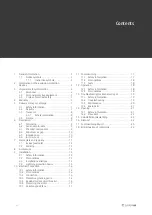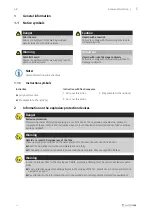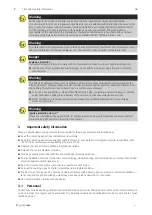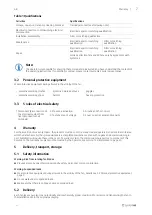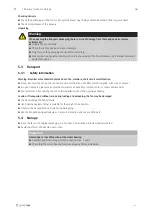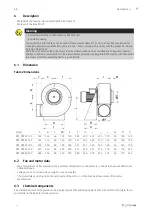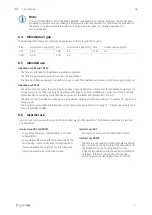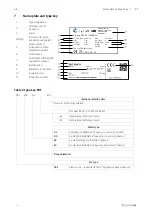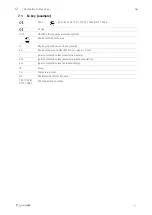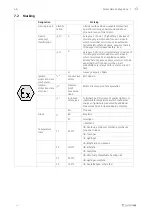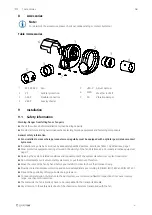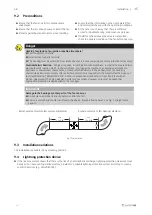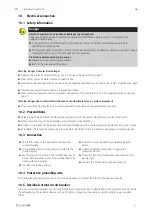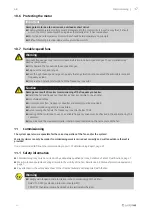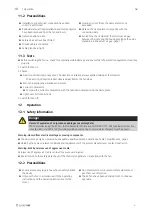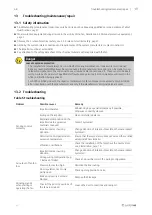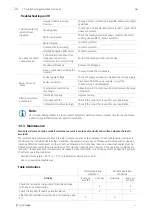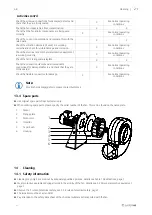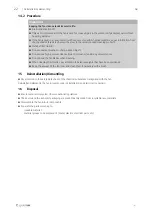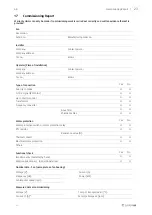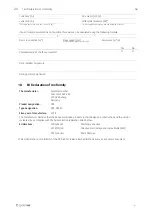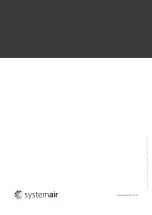
17
10.6 Protecting the motor
Important
Damage to motor due to overcurrent, overload or short circiut.
♦
Lead-out temperature monitors must be integrated in the control circuit in such a way that, if a fault
occurs, the motor cannot switch on again automatically after it has cooled down.
♦
Motor lines and temperature monitor lines should be laid separately on principle.
♦
Without thermal protection: Use a motor protection switch!
10.7 Variable-speed fans
Warning
Resonant frequencies may result in increased vibration in certain speed ranges. These vibrations may
destroy components.
♦
Only operate the fan outside these speed ranges.
♦
Skip over these speed ranges.
♦
Pass through these speed ranges so quickly that any vibration cannot exceed the admissible resonant
frequency values.
♦
Observe the operating instructions of the frequency converter.
Caution
Damage as a result of incorrect commissioning of the frequency converter.
♦
Install the fan and frequency converter as near as possible to one another.
♦
Use shielded cables.
♦
All components (fan, frequency converter and motor) must be grounded.
♦
We recommend using all-pole sinus filters.
♦
Avoid running the fan via the frequency converter below 10 Hz.
♦
Heating of the motor due to use of a variable frequency drive must be checked in the application by the
customer.
♦
Never exceed the maximum impeller rotation speed indicated on the name plate of the fan.
11
Commissioning
The system operator is responsible for the correct operation of the fan and/or the system!
Warranty claims can only be made if commissioning work is carried out correctly and written evidence thereof is
provided.
It is recommended to fill out the commissioning report 17
11.1 Safety information
♦
Commissioning may only be carried out by adequately qualified persons, details see Table 1
♦
Wear protective equipment during all work in the vicinity of the fan, details see 3.2
♦
Pay attention to the safety data sheet of the chemical substances transported with the fan.
Warning
♦
Comply with fundamental information in the commissioning of the EX fan:
• DGVU 113-001 (explosion protection rules (EX-RL))
• TRGS 727 (Avoiding ignition hazards due to electrostatic charges).
| 002

